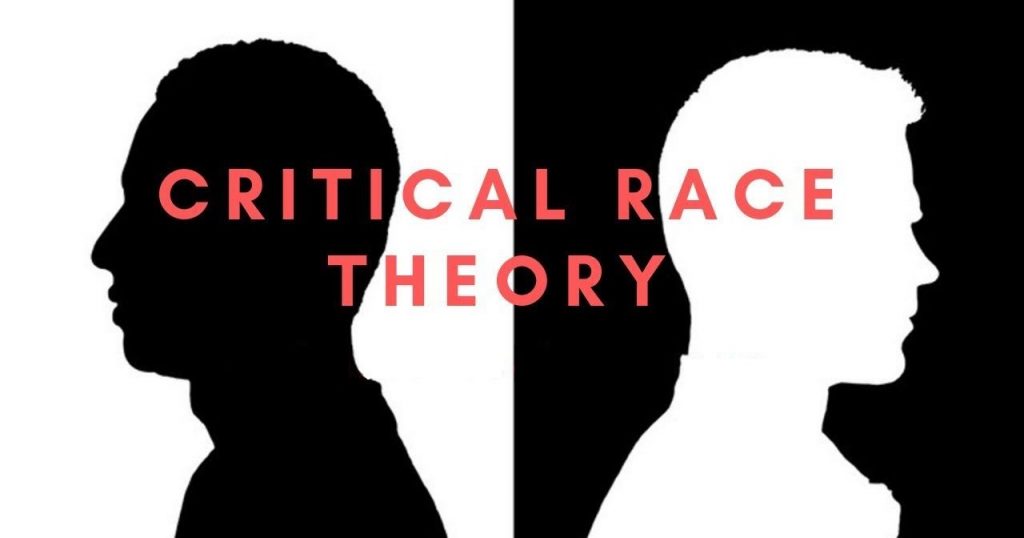An Historical Look at the Social Justice Movement in American Society

|
Ads we feature have been independently selected and reviewed. If you make a purchase using the links included, we may earn a commission, which helps support the site. Thank you for your support.
Critical Race Theory (CRT) is a term that is much bandied about on social media and in the press today, but the average citizen is likely to be unsure about what it is. After all, the term is non-specific in meaning, the very definition of a specious term. We know it’s got something to do with race (in America), it’s a theory (OK, an academic concept), and it’s critical, so it’s a make-or-break thing. But, put those parts together, and it’s meant to convey… nothing of any substance. So, to go beyond pundit-spout, we must look at the roots of the movement. Which the mainstream media does not (will not) cover.
The History of Marxism
The Marxist Left structured its political program based on the theory of class conflict. Karl Marx thought that the basic characteristic of his day’s industrial societies was an imbalance of power between the few capitalist have-alls (the 1% in today’s terms) and the many workers. His solution to that imbalance was revolution: the workers would at some point gain consciousness of their situation, secure the mechanisms of production, overthrow the capitalists, and thrive in a new socialist society.
Since then, many societies have enacted Marxist-themed revolutions. Each and every one concluded in sheer disaster. Socialist/communist governments in the Soviet Union, China, Cambodia, Cuba, and elsewhere ended up killing nearly 100 million of their own (expendable or non-cooperative) citizens. Theory generated from the comfort of a London library was one thing, but in practice, Marx’s ideas brought about utter societal destruction.
Fast-Forward to the Mid-1960s
Marxist intellectuals in the West had finally begun to acknowledge these catastrophes. They wanted to close their eyes to Soviet butcheries and ultimately realized that worker’s revolutions could never happen in classic Marxist fashion in Western Europe or in the US, where there were already predominant middle classes and the standards of living were constantly improving. Americans had never really developed a sense of class consciousness or class division in the same sense as those in the Old World. Americans were brought up to believe in the American dream, the concept that they could rise above their beginnings via education, working hard, and practicing good citizenship.
With this realization, Marxists simply adjusted their revolutionary theory to work with the social and racial unrest happening in the 1960s. They discarded Marx’s economic theory of capitalists and workers and substituted the term race for class and initiated a revolutionary conglomerate of the abused based upon racial and ethnic categories, a move where they acted as the cancel culture on themselves! But, Americans preferred the concept of improving the country rather than overthrowing it. The Marxists needed a new strategy.
Critical Race Theory is Born
It was conceived in the 1990s, constructed upon the intellectual skeleton of “identity-based” Marxism. For many years it remained in universities and obscure academic journals. But insidiously, over the past decade, it has solidified into the default ideology in many of our public institutions. It’s been instilled in government agencies, public (and some private) schools, and human resources departments. You’ve probably seen it in the guise of diversity training programs, public policy guidelines, and school curricula. The accepted over-reach is mind-boggling. Writing for Imprimis, Christopher F. Rufo gives some examples:1
- In the name of equity, UCLA Law Professor and critical race theorist Cheryl Harris has proposed suspending private property rights, seizing land and wealth and redistributing them along racial lines.
- Critical race guru Ibram X. Kendi, who directs the Center for Antiracist Research at Boston University, has proposed the creation of a federal Department of Antiracism. This department would be independent of (i.e., unaccountable to) the elected branches of government, and would have the power to nullify, veto, or abolish any law at any level of government and curtail the speech of political leaders and others who are deemed insufficiently “antiracist.” This is the cancel culture at its finest.
- The Department of Homeland Security was telling white employees they were committing “microinequities” and had been “socialized into oppressor roles.”
- The Treasury Department held a training session telling staff members that “virtually all white people contribute to racism” and that they must convert “everyone in the federal government” to the ideology of “antiracism.”
- The Sandia National Laboratories, which designs America’s nuclear arsenal, sent white male executives to a three-day reeducation camp, where they were told that “white male culture” was analogous to the “KKK,” “white supremacists,” and “mass killings.” The executives were then forced to renounce their “white male privilege” and write letters of apology to fictitious women and people of color.
- In Cupertino, California, an elementary school forced first-graders to deconstruct their racial and sexual identities, and rank themselves according to their “power and privilege.”
- In Springfield, Missouri, a middle school forced teachers to locate themselves on an “oppression matrix,” based on the idea that straight, white, English-speaking, Christian males are members of the oppressor class and must atone for their privilege and “covert white supremacy.”
- In Philadelphia, an elementary school forced fifth-graders to celebrate “Black communism” and simulate a Black Power rally to free 1960s radical Angela Davis from prison, where she had once been held on charges of murder.
- In Seattle, the school district told white teachers that they are guilty of “spirit murder” against black children and must “bankrupt [their] privilege in acknowledgment of [their] thieved inheritance.”
“The climate crisis is a crisis born of injustice. A crisis born at the pursuit of profit… The trampling of indigenous rights is a cause of climate change. The trampling of racial justice is a cause of climate change.”
Alexandria Ocasio-Cortez
Terminology
Some of the terms employed by its supporters to describe critical race theory are “equity,” “social justice,” “diversity and inclusion,” and “culturally responsive teaching.” Equity sounds benign. It’s easily confused with the American principle of equality. And really, who among us would object to more home equity? That’s got to be a good thing, right? But the distinction is important. Equality, the principle proclaimed in the Declaration of Independence, defended in the Civil War, and codified into law with the 14th and 15th Amendments, the Civil Rights Act of 1964, and the Voting Rights Act of 1965—is explicitly rejected by critical race theorists. To them, equality represents “mere non-discrimination” and provides “camouflage” for white supremacy, patriarchy, and oppression.
Critical race theorists and their sycophants like to project the image of themselves as benign social justice warriors, seeking only to improve the condition of society. Nothing is further than the truth. Like Antifa thugs and the more radical arm of BLM, they are Marxists who are determined “by any means necessary” to shift all the power to their control. Unfortunately, the media is only too happy to be complicit and corporate America pays them more homage than they do to consumers. That is capitalism turned on its head. Perhaps it is working after all.
Further Reading
- Do Social Networking Sites Have an Agenda?
- Why is the Democrat Left so Angry?
- Joe Biden’s History on Race Relations and Civil Rights
- Sorry Bernie, Socialism Doesn’t Work
- Vladimir Putin – the Man, the Myth
- Is Tuition-Free College an American Right?
- 5 Fixes Increase Your Home’s Value
- Abe Lincoln’s Emancipation Proclamation: Interesting Facts
- Democratic Socialism in America
- Philosophy of Martin Luther King
- The History of Cancel Culture
Looking for more great content? Visit our main page or partner sites:
I offer article and blog-writing services. Interested? Contact me for a quote!
Did you find this article helpful? Millions of readers rely on information on this blog and our main site to stay informed and find meaningful solutions. Please chip in as little as $3 to keep this site free for all.









 Kelly R. Smith is an Air Force veteran and was a commercial carpenter for 20 years before returning to night school at the University of Houston where he earned a Bachelor’s Degree in Computer Science. After working at NASA for a few years, he went on to develop software for the transportation, financial, and energy-trading industries. He has been writing, in one capacity or another, since he could hold a pencil. As a freelance writer now, he specializes in producing articles and blog content for a variety of clients. His personal blog is at
Kelly R. Smith is an Air Force veteran and was a commercial carpenter for 20 years before returning to night school at the University of Houston where he earned a Bachelor’s Degree in Computer Science. After working at NASA for a few years, he went on to develop software for the transportation, financial, and energy-trading industries. He has been writing, in one capacity or another, since he could hold a pencil. As a freelance writer now, he specializes in producing articles and blog content for a variety of clients. His personal blog is at 










 Kelly R. Smith is an Air Force veteran and was a commercial carpenter for 20 years before returning to night school at the University of Houston where he earned a Bachelor’s Degree in Computer Science. After working at NASA for a few years, he went on to develop software for the transportation, financial, and energy-trading industries. He has been writing, in one capacity or another, since he could hold a pencil. As a freelance writer now, he specializes in producing articles and blog content for a variety of clients. His personal blog is at
Kelly R. Smith is an Air Force veteran and was a commercial carpenter for 20 years before returning to night school at the University of Houston where he earned a Bachelor’s Degree in Computer Science. After working at NASA for a few years, he went on to develop software for the transportation, financial, and energy-trading industries. He has been writing, in one capacity or another, since he could hold a pencil. As a freelance writer now, he specializes in producing articles and blog content for a variety of clients. His personal blog is at 

